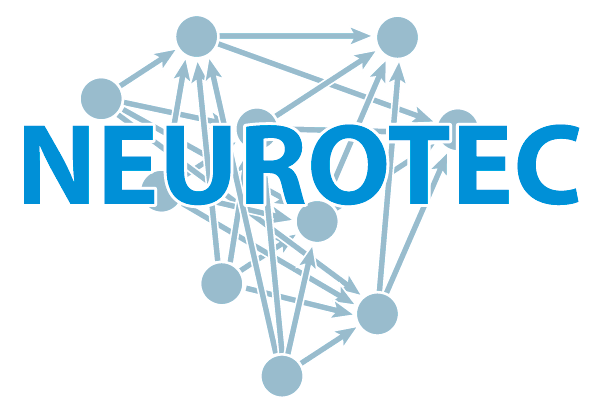
Neuromorphic AI with high energy efficiency - from research to society.
In the very dynamic research field of neuromorphic computing (NC), areas of basic research and engineering from different disciplines (physics, materials science, neuroscience, computer science, electrical engineering) meet. Neuromorphic computing technology is oriented in various ways to the functional principles and performance of the brain. The goal for the neuromomorphic technology is to aim for the orders of magnitude higher energy efficiency of the biological brain. This is where we see the main benefit of neuromorphic computing for society: resource-efficient AI with high energy efficiency.
The topic of neuromorphic computing shows many facets and is always viewed from a certain angle by the respective discipline. Computer science, for example, sees NC as an extension of machine learning with the possibility of moving certain algorithms far into the hardware - be it analog or digital. Circuit designers recognize the possibilities of new components and functional blocks that can be assembled as non-volatile memories or artificial synapses to form completely new architectures - right up to systems that no longer function according to the von Neumann computer principle, but compute directly in memory. Computer systems that function like artificial neuronal networks, whose neurons are interconnected in the hardware, are even closer to their brain role model.
Artificial synapses with adjustable so-called synaptic weights establish the connection between the neurons. Learning then means nothing more than changing these weights of the synapses until the result is (sufficiently) good. Before they can be interconnected in a network, the novel electronic components must be suitably integrated into the overall electronics. The physics of the component itself also first needs to be understood. To this end, it is comprehensively characterized electrically and its behavior is modeled so that it can first be simulated in large circuit diagrams. The ideal conception of the engineers here would be a predictive model that predicts the properties of the electronic component according to changes in material parameters.
The deposition of the material layers of memristive devices - including entirely new functional material systems - is a challenge for materials research, especially when it is done on silicon wafers, which have tiny nanometer structures under which the many transistor functions are hidden. This requires high-technology infrastructure with various deposition systems and complex structuring processes. Emerging 2D materials with their sometimes surprising properties are also coming into the focus of researchers' interest.
In summary, the focus of our research is to demonstrate energy-efficient neuromorphic hardware AI bundeled with a software ecosystem for AI algorithms including energy-efficient learning and inference.
Applications of this NC technology research - in terms of new products and services - can be systematized along their size and scope. They range from edge computing on the wrist to modules within large-scale computing facilities such as the Jülich supercomputers. The certainly economically important area of autonomous systems based on neuromorphic AI is being researched by the ZukunftsCluster NeuroSys with its numerous projects. In fact, market observers expect a growing market from 2026 (Yole Reports 2021). More and more manufacturers and especially startups are offering opportunities to design neuromorphic AI chips and manufacture them in pilot series, in addition to non-volatile memory applications. So in the future, you may encounter neuromorphic chips in your devices. You will notice it in the lower energy consumption.
Read more about different aspects of neuromorphic computing on the PGI-14 Neuromorphic Computing Nodes pages.
A description of the materials research for memristive neuromorphic devices can be found on the pages of the Electronic Material Research Laboratory (EMRL).
For an introduction and an insight into the labs, see the video from the Structural Change VLOG series: "Our brain and the computers of the future":
in this video Prof. Rainer Waser introduces the topic of neuroinspired electronics in more detail:







